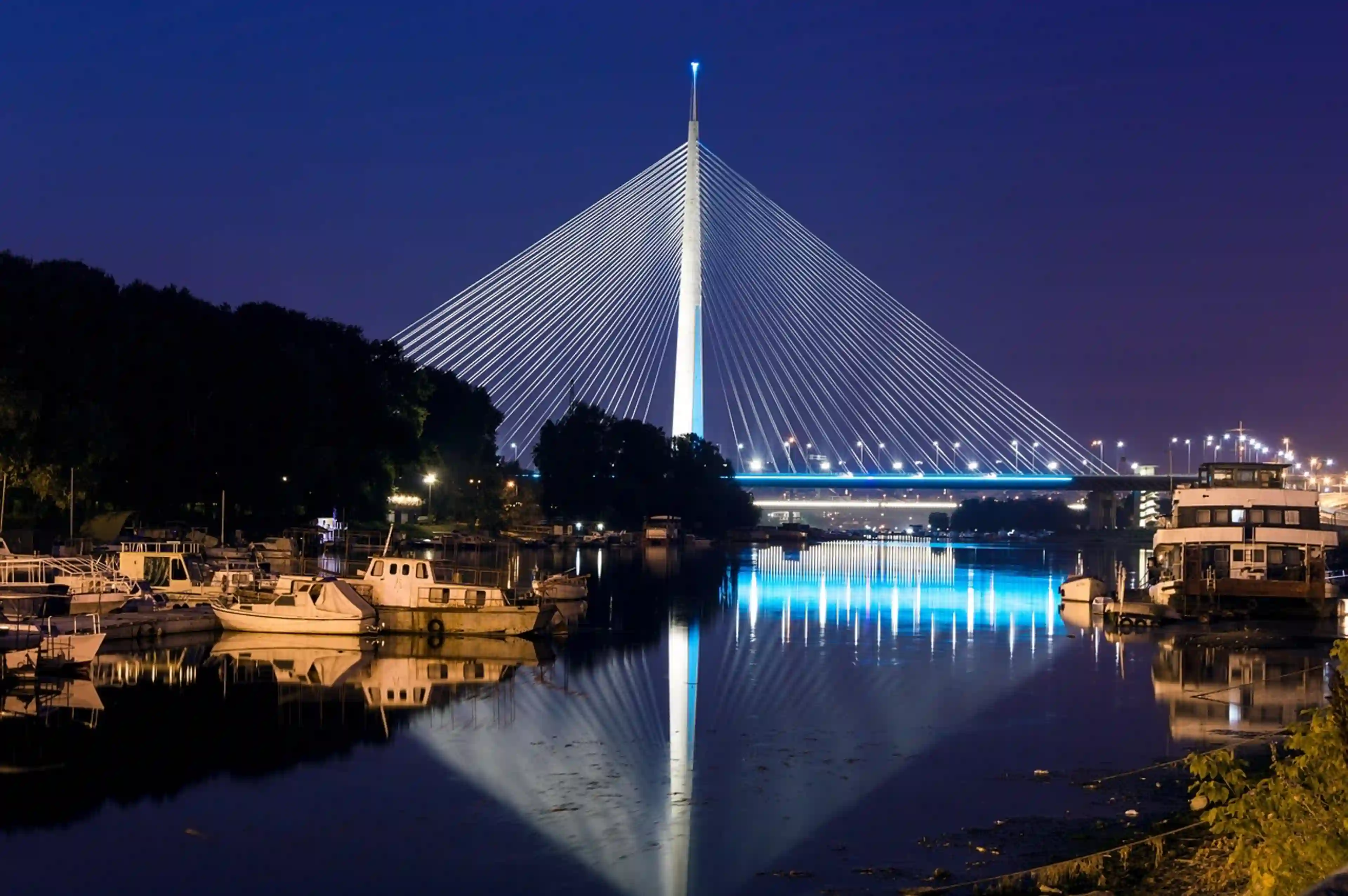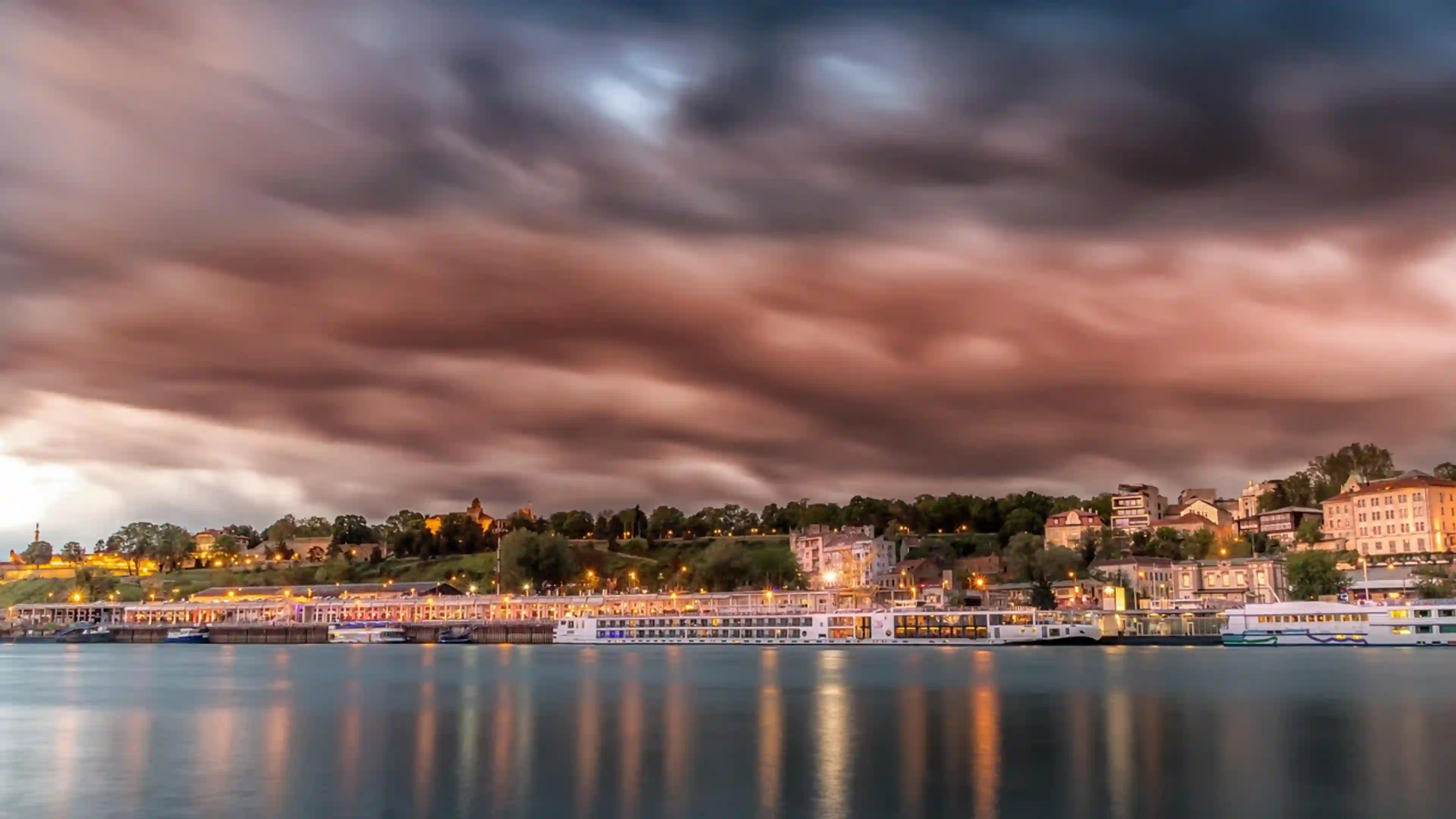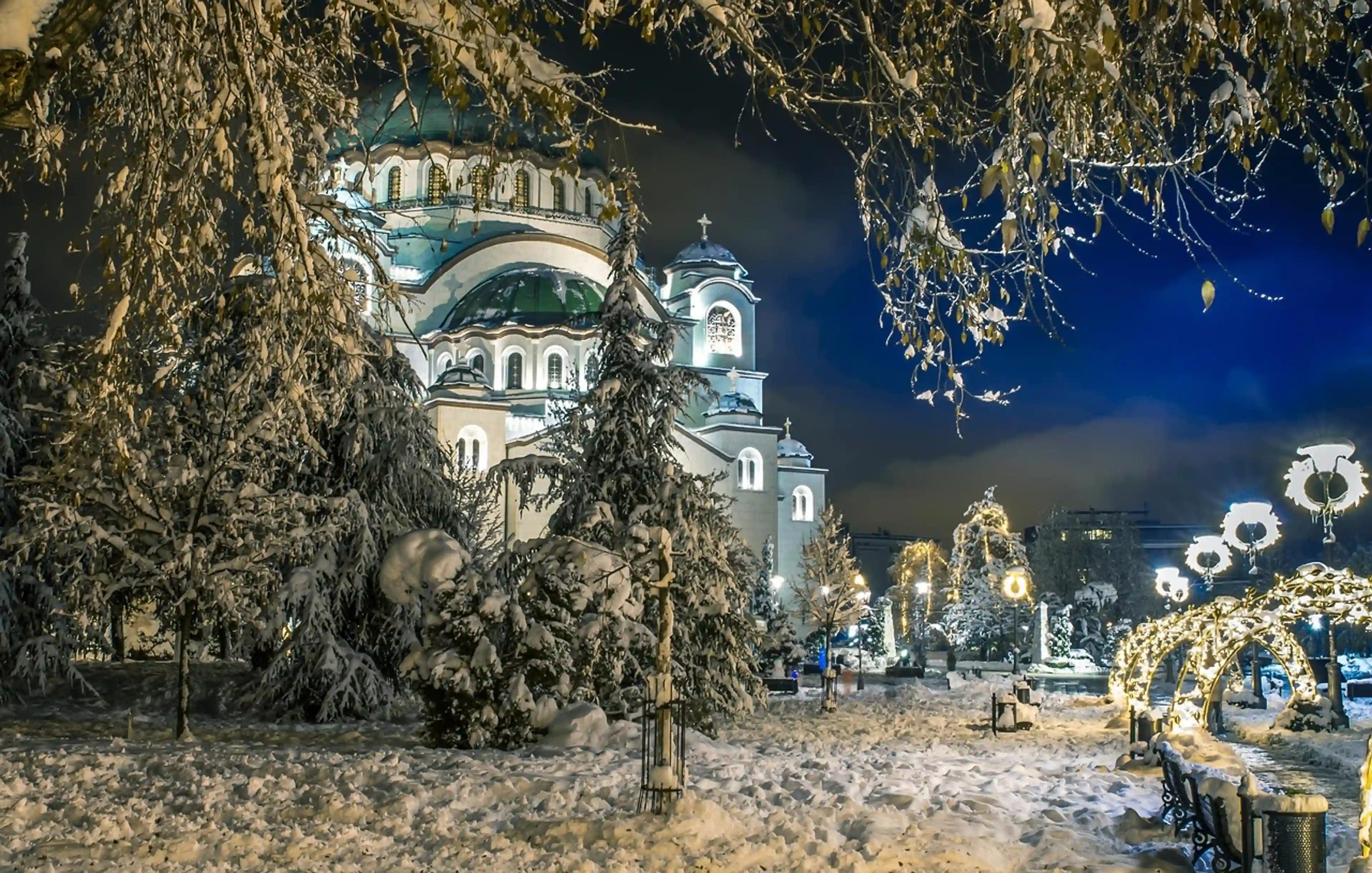Belgrade
General presentation
Top 50
History, culture & traditions
Travel advice
Wikipedia
Viator activities
Tiqets activities
Overall presentation
The dynamic capital of Serbia, Belgrade proudly stands at the confluence of the Sava and Danube rivers, housing around 1.2 million inhabitants. This metropolis is among the oldest cities in Europe, continuously inhabited for millennia, showcasing a rich historical and cultural heritage. Known for its vibrant culture and legendary nightlife, it attracts visitors from around the world seeking authenticity and unique urban experiences.
Geographical location
Strategically positioned in the center of Serbia, the city occupies a privileged place at the junction of the Pannonian Plain and the Balkan Peninsula. This exceptional location at the crossroads of Central and Southeastern Europe makes it a historical meeting point where different cultures and influences merge, a legacy of a rich and complex past.
Ambiance and character
The eclectic atmosphere of the Serbian capital captivates with its skillful blend of ancestral traditions and urban modernity. The city comes alive particularly at night, revealing a nightlife renowned throughout Europe with its numerous clubs, bars, and "splavovi" (boat-clubs) moored along the banks. The historic district of Skadarlija perpetuates the bohemian spirit of the city with its traditional kafanas where live music and authentic local flavors resonate.
Climate
A moderate continental climate characterizes the region, marked by hot summers and harsh winters. Summer temperatures generally range between 26 and 30°C, while winter months can see temperatures drop below zero. Precipitation is evenly distributed throughout the year, with wetter periods concentrated in spring and autumn.
Best season to visit
The intermediate seasons offer the most favorable conditions to discover the city:
- Spring (April to June): pleasant temperatures and moderate precipitation
- Autumn (September to October): mild climate and reduced tourist influx
Summer (June to August) is perfect for fans of outdoor festivals and intense nightlife, although this period is accompanied by higher attendance and increased rates.
Access
Belgrade Nikola Tesla International Airport, located 18 kilometers west of the city center, provides air connections to numerous European and global destinations. Travelers can also reach the capital by rail via the main train station, which offers national and international connections, or by intercity bus lines linking Serbia and Europe.
Internal transport
An extensive public transport network efficiently serves the entire city through buses, trams, and trolleybuses. Since January 1, 2025, these transports are completely free, making the capital the largest European city to offer this exceptional service. Official taxis are an affordable and convenient alternative, while the city is gradually developing its cycling infrastructure, particularly along the banks of the Sava and Danube, with bike rental services available.
Top 50
Wikipedia
Viator activities
Tiqets activities



